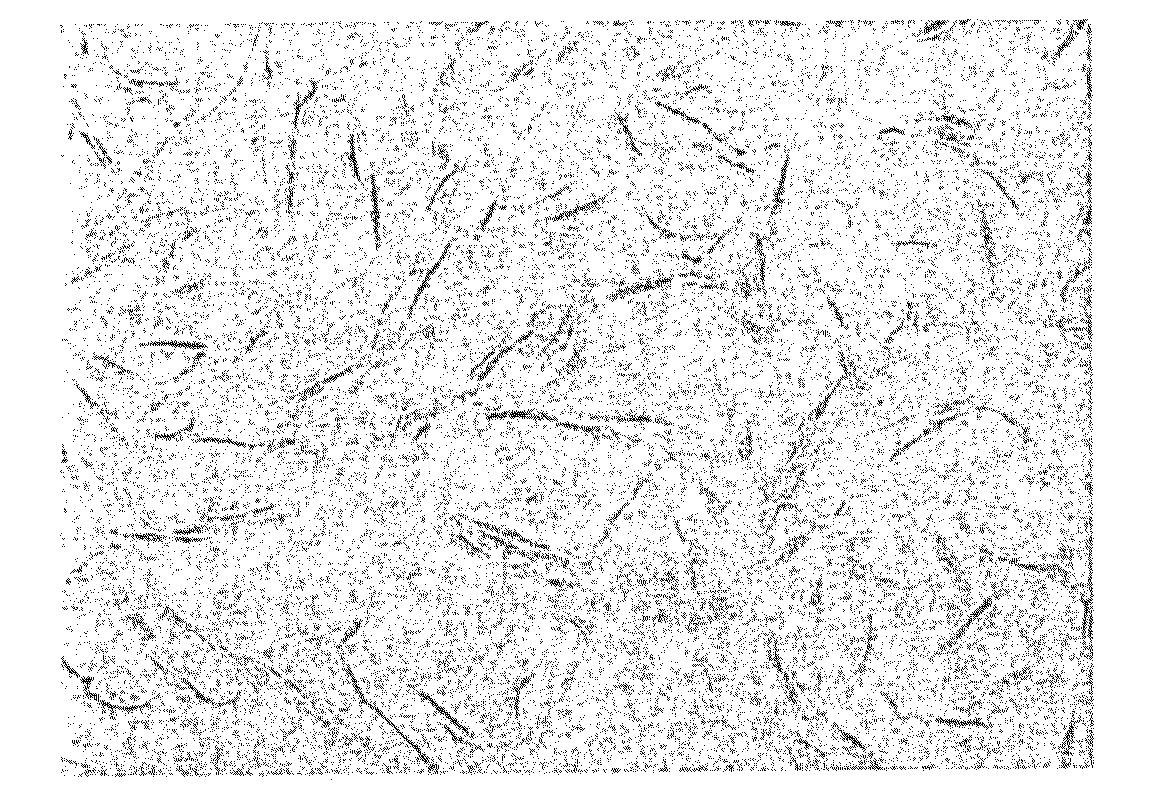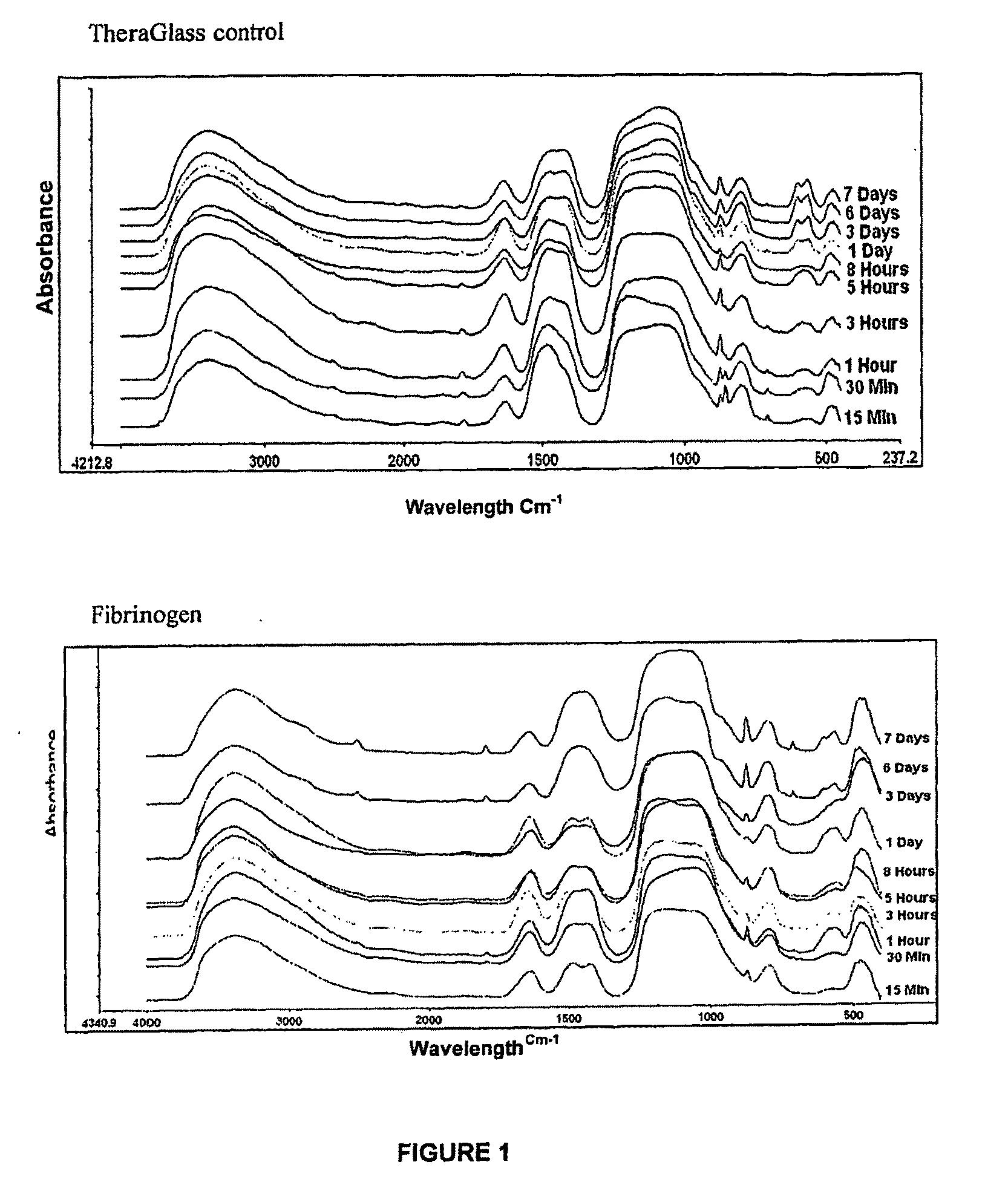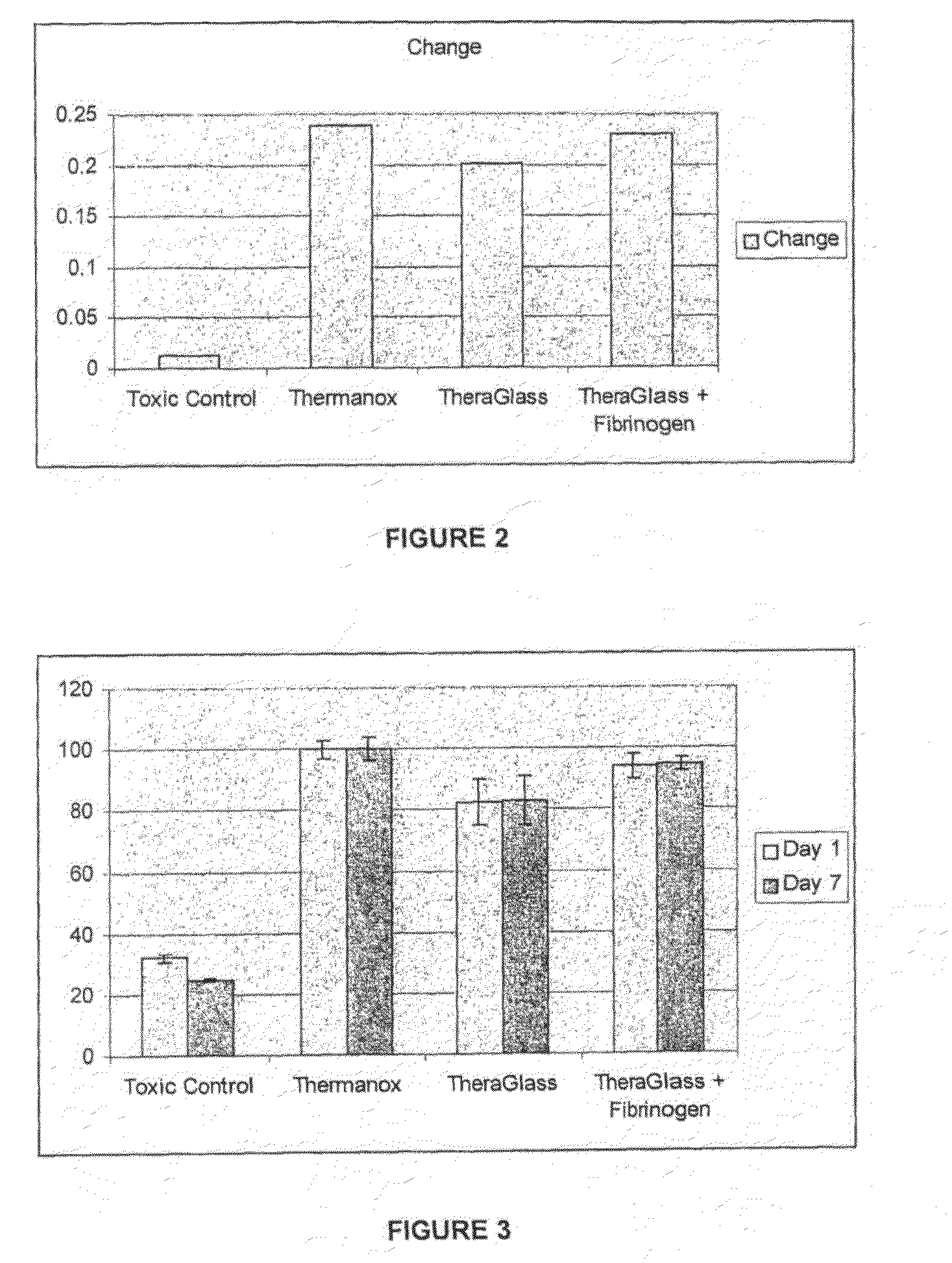Composite material
a technology of composite materials and materials, applied in the field of composite materials, can solve the problems of inability and lack of ‘ease of use’ of wound care dressings containing high levels of fibrinogen, and achieve the effects of reducing the risk of infection, and improving the quality of li
- Summary
- Abstract
- Description
- Claims
- Application Information
AI Technical Summary
Benefits of technology
Problems solved by technology
Method used
Image
Examples
example 1
Assessment of Theraglass Take-Up of Fibrinogen
[0114]Three specimens of TheraGlass (weight 0.7-1.2 g) were immersed in a solution of fibrinogen for 30 minutes. The concentration of fibrinogen protein in the solution pre- and post-soaking was measured to assess take-up of fibrinogen by the TheraGlass.
[0115]Human fibrinogen is obtained either as a commercial product extracted from pooled human plasma (e.g. Sigma Aldrich, product #F4883) or as recombinant human fibrinogen produced in the milk of transgenic cattle. For example, transgenic cattle have been produced that have transgenes stably integrated into their genome. The transgenes are comprised of a mammary-gland specific promoter and DNA sequences encoding each of the three human fibrinogen polypeptide chains. These transgenic cattle express the recombinant proteins encoded by the transgenes in mammary epithelial cells which secrete fibrinogen into the milk. In contrast to plasma derived fibrinogen, recombinant human fibrinogen pro...
example 2
Analysis of Theraglass Bioactivity after Incorporation of Fibrinogen
FTIR Test Methodology
[0118]Fibrinogen (16.2 mg / ml) was used in the study, the protein was diluted in 10 ml of ‘water for injection’ to make up the solution to approximately 20 ml. Ten samples of TheraGlass (0.8-1.2 g) were selected. These samples were tested at different time points: 15, 30 minutes, 1, 3, 5, 8 hours, 1, 3, 6, and 7 days to determine the bioactivity of the glass. Initially the 10 samples were soaked in the protein solutions for 30 minutes on an orbital shaker at 37° C. After this time period the glass samples were removed and placed in 10 individual sealable containers containing 100 ml Simulated Body Fluid (SBF) essentially as described by Lukito et al 2005 (Materials Letters: 59: 3267-3271). At the individual time points mentioned above, the samples were removed from the SBF solution and placed in a dry glass vial, which was transferred to an oven maintained at 37° C.
[0119]The reacted dried glass s...
example 3
Analysis of Fibroblast Response to Theraglass+Fibrinogen
[0124]Three materials were tested to determine fibroblastic response.
(1) TheraGlass cube
(2) TheraGlass cube which had been soaked in fibrinogen for 30 minutes
(3) Thermanox plastic (positive control)
(4) PVC (toxic control)
[0125]Thermanox (Nalge Nunc International, 75 Panorama Creek Drive Rochester, N.Y. 14625-2385) and PVC (Organo-tin stabilized (vinylchloride), Smiths Medical International Ltd, Hythe, Kent CT21 5BN) materials were in accordance with controls as described with ISO 10993-5 Biological Evaluation of Medical Devices (Tests for in vitro cytotoxicity).
[0126]The protein containing sample was soaked in the same concentration of fibrinogen as that of the FTIR experiments. Primary Human Fibroblasts (Passage number 16) were seeded onto the test materials at a density of 1.6×104 cell per well. Adherent cells were examined microscopically (Inverted microscope) for morphology and cell density on the test materials at 1 and 7 ...
PUM
| Property | Measurement | Unit |
|---|---|---|
| Fraction | aaaaa | aaaaa |
| Percent by mass | aaaaa | aaaaa |
| Percent by mass | aaaaa | aaaaa |
Abstract
Description
Claims
Application Information
 Login to View More
Login to View More - R&D
- Intellectual Property
- Life Sciences
- Materials
- Tech Scout
- Unparalleled Data Quality
- Higher Quality Content
- 60% Fewer Hallucinations
Browse by: Latest US Patents, China's latest patents, Technical Efficacy Thesaurus, Application Domain, Technology Topic, Popular Technical Reports.
© 2025 PatSnap. All rights reserved.Legal|Privacy policy|Modern Slavery Act Transparency Statement|Sitemap|About US| Contact US: help@patsnap.com



